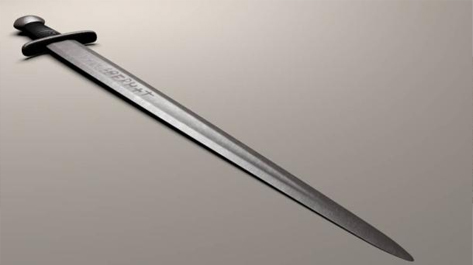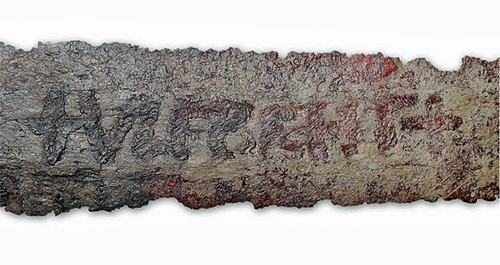With so many reality TV shows on our screens now I rarely switch on any more but I’ve been drawn by the Medieval drama of “Vikings” enough to go back to series 1 and watch every episode! (We’re now on series 4!). We’re transported to the rather brutal world of Ragnar Lothbrok, a Viking warrior and farmer who is determined to explore (and to raid, of course) overseas. He upsets the current earl but enthuses many of the local community, crafting new ships capable of handling the rough northern seas.
Of course much of what we see on screen is certainly not historically/scientifically accurate but there are many elements which are correct and it has prompted me to look a little closer! We see skilled trades at work, and weapons being forged in forest camps while the warriors are out on raiding parties and I wondered how realistic that might be.
In medieval times having a blacksmith make a sword all by himself would be as common as having a heart surgeon today do an operation all by himself. A single person blacksmith shop is an oxymoron in historical times. Those forest forgers all seem to work on their own though on the TV! I guess too much accuracy spoils the story and reigns in the artistry of the set…
There is one known kind of Viking sword which was particularly highly renowned; Ulfberht. Basically the Medieval “designer” brand, these swords were of such high quality they were considered almost magical. Many of these have been found in Europe and I understand that no one really knows how they are of such astounding quality! The metal is so strong and pure that it’s hard to understand how any sword maker of the time could have produced such pieces.
Current research tells us that this quality boils down to the kilns in which they were forged! I believe that therein lays a lesson for us now. We look at the processes we need to carry out, the “ingredients” we must transform, and in order to achieve the best results and make history change, one scientific process at a time, our tools MUST work as they should. If your stirrer hotplate isn’t consistent in tracking the temperature your results cannot be consistent or wholly compatible for repeating or for scale-up. If your oven (or “kiln”!) doesn’t hold the heat as it should, or heat to a high enough temperature, will your components react the way they should every time? At the time these swords were made (around 800-1000 A.D.), equally puzzling swords made of Damascus steel were being brought to life in the Middle East from a raw material known as Wootz steel which came from Asia. Both Damascus steel and Ulfbehrt’s so-called “crucible steel” had high amounts of carbon.
Carbon can make or break a sword; if it’s not used in perfectly controlled proportions the sword will be either too soft or too brittle. When balanced carbon greatly strengthens the blade though. The Ulfberht has a carbon content about three times higher than that of other swords of its time so it would have been far stronger and yet more flexible than other swords, as well as light-weight. It also had almost no impurities. This would have allowed for a more even distribution of carbon. This is something we can give another current slant to, thinking of how we use rotary evaporators or tube/plate evaporators to great effect now, with all the means we have for sample preparation.
It was thought, before Ulfberht was discovered, that the capability to remove impurities to such an amazing degree only became possible during the Industrial Revolution. Iron ore must be heated to 3,000 degrees Fahrenheit to accomplish this (an unbelievable 1649oC approx), a feat the Ulfberht makers apparently accomplished 800 years ahead of their time. With great effort and precision, a modern blacksmith (Richard Furrer of Wisconsin) forged a sword of Ulfberht quality using technology that would have been available in the Middle Ages. He said it was the most complicated thing he’d ever made, and he used methods not known to have been used by people of that time.

Robert Lehmann, a chemist at the Institute for Inorganic Chemistry at the University of Hannover, told local publication Süd Deutsche that the material from which the Ulfberht was forged “certainly does not come from the East.” He studied an Ulfberht sword found in 2012 on a pile of gravel excavated from the Weser River, which flows through Lower Saxony in northwestern Germany. This sword’s blade also has a high manganese content, which signalled to Lehmann that it did not come from the East.
The guard was made of iron with a high arsenic content which suggests, to those in the know, a European deposit. The pommel was covered with a sheet of tin-lead alloy. Lehmann had compiled in previous studies a map of Germany’s lead isotope sources, allowing him to determine that the pommel plate lead had come from a site in the Taunus region, just north of Frankfurt, Germany. The lead would not likely have been mined and transported elsewhere for processing, since the deposit was already largely exploited in Roman times. This suggests that the sword was forged close to the source, bringing researchers perhaps a step closer to the elusive Ulfberht! I wonder if we’ll ever discover how they actually forged this amazing sword though? Just be glad you have all the tools of a modern laboratory!






